From the grand tapestries that once adorned medieval castles to the woodblock prints of early sheets, the evolution of wallpaper tells a rich story of art, technology, and societal change. When once only the wealthiest could afford lavish tapestries that added colour and warmth to cold stone walls, wallpaper was an accessible alternative for the less well-off gentry. Utilising techniques such as hand-painting, woodblock printing, and stencilling – all dating back to the 17th century – artists transformed rooms into scenes of beauty and storytelling, filling spaces with patterns, colours, and motifs that reflected personal tastes. Early wallpapers often featured elaborate designs akin to tapestries, sometimes hung loosely or pasted to walls. The industrial revolution meant that these repeating patterns could be reproduced at a huge rate, and though some designers such as William Morris eschewed such modern methods of production, the technological advancement revolutionised interior decoration.
Heritage brands
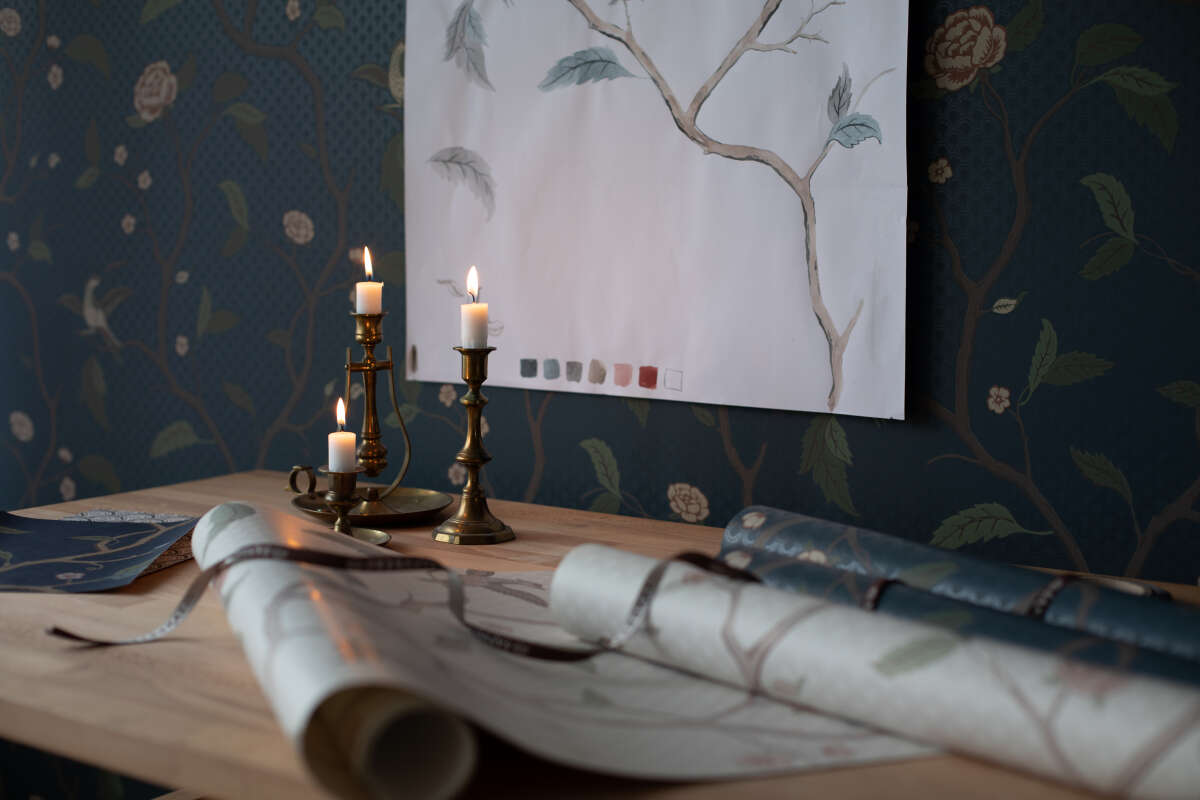 Marianne Midnight Blue wallpaper interior. Image Credit, Sandberg
Marianne Midnight Blue wallpaper interior. Image Credit, Sandberg
The introduction of wallpaper redefined interior spaces and meant that artwork was no longer confined to the frame. There is Morris, and his illustrative patterns of native British flowers and plants, or the stylised birds, hearts and florals of Charles Voysey’s collection, and more recently the nostalgic repeating prints of Orla Kiely’s vibrant designs. Given its long history, some heritage wallpaper brands embody this seamless integration of art and interior décor. One such brand is Sandberg Wallpaper, established in 1976 by the Sandberg family in Sweden, to create wallpapers and fabrics that blend classic designs with contemporary Scandinavian aesthetics. The brand quickly gained recognition for its hand-drawn patterns inspired by Swedish nature and landscapes. In 2012, Sandberg was acquired by Gimmersta Wallpaper Company, a family-owned company led by Irene and Christofer Gimmersta. Gimmersta, with a legacy in the wallpaper industry dating back to 1925, infused new energy into Sandberg, focusing on strengthening its brand identity and expanding its design portfolio.
Preserving tradition
Under Gimmersta's stewardship, Sandberg has introduced hundreds of new designs while honouring its traditional craftsmanship. "Since Sandberg became part of Gimmersta Wallpaper, we have focused on continuing what Sandberg was from the start.” explains Fanny Arturén, Key Account Manager at Gimmersta, “We have tried to strengthen the brand identity and also introduced hundreds of new designs."
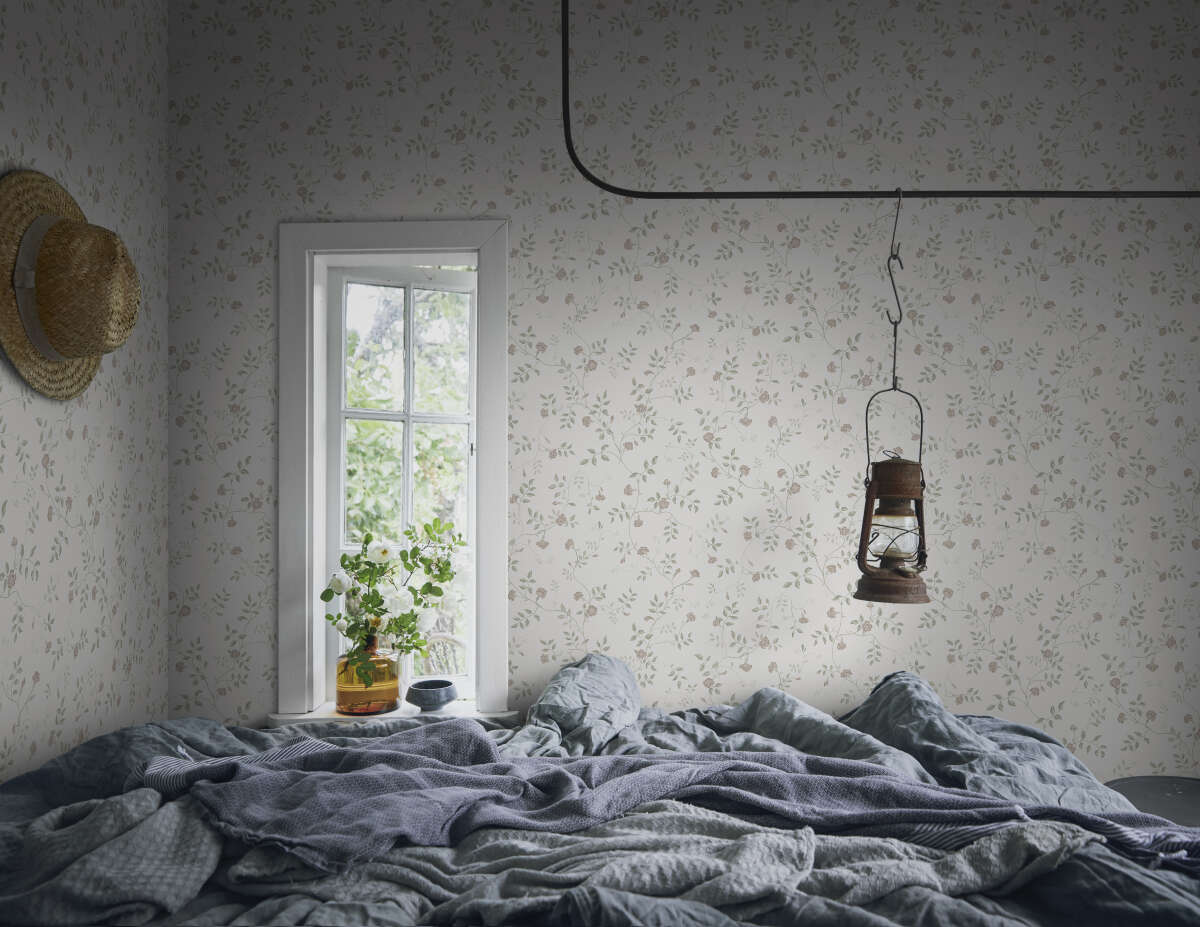 Henny pastel wallpaper interior. Image Credit, Sandberg
Henny pastel wallpaper interior. Image Credit, Sandberg
Gimmersta's portfolio extends beyond Sandberg, with Rebel Walls, known for its imaginative scenic wallpapers; Happy Wall, with customisable mural wallpapers; and Hovia, with more modern digitally printed wallpapers. With such a broad portfolio of wallpapers, Sandberg stands out for its rich history and traditional artistry. "Sandberg is the mother of the company because it's such a beautiful brand, and it's got so much story and history behind it,” says Fanny. “We take very good care of the brand itself." This respect for the brand means that the company has held onto the methods of making which make it so special. Each piece is still hand-drawn by their in-house team of three designers.
The art of hand drawing
.jpg?s=1200&q=60)
(1).jpg?s=1200&q=60) One of Sandberg's designers at work. Image Credit, Sandberg
One of Sandberg's designers at work. Image Credit, Sandberg
The process is extensive and deliberate, involving numerous iterations before arriving at the final design. The designers often delve into Sandberg's rich archives "to see if there are any old patterns that we can use for new collections by updating them or adding new details" explains Fanny. A prime example is the beloved Raphaël design, featuring elegant leafy trees that bring a sense of the outdoors inside. Sandberg is renowned for its distinctive colour schemes, and as Fanny notes, "It's very important for us and for the designers to make sure that the colours can be matched with each other, no matter if it's between different patterns." Their successful 'mix and match' concept, is demonstrated in the way that the intricate foliage of Raphaël pairs beautifully with the subtle stripes of Rand Gray, or the gingham or Ruta Blush, or even the magnolias, roses, lilacs, and lilies of Linda Misty Blue, for a more striking layering of prints.
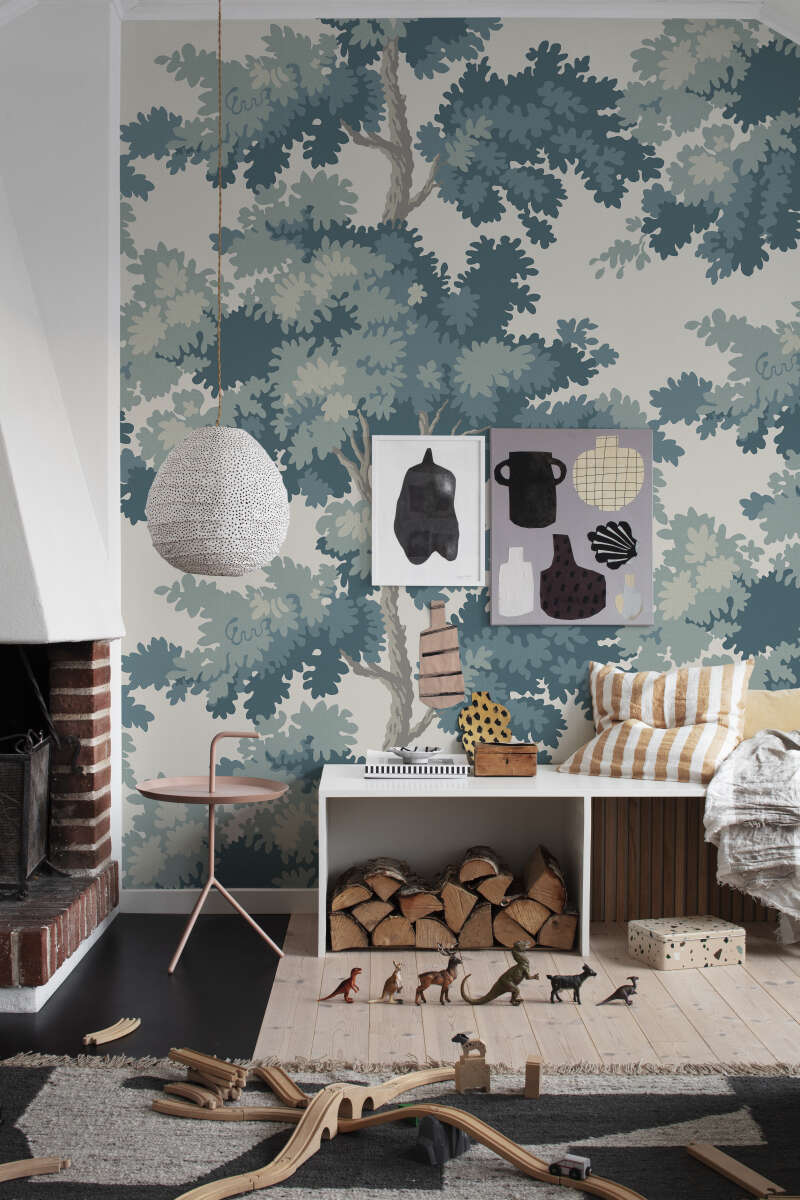
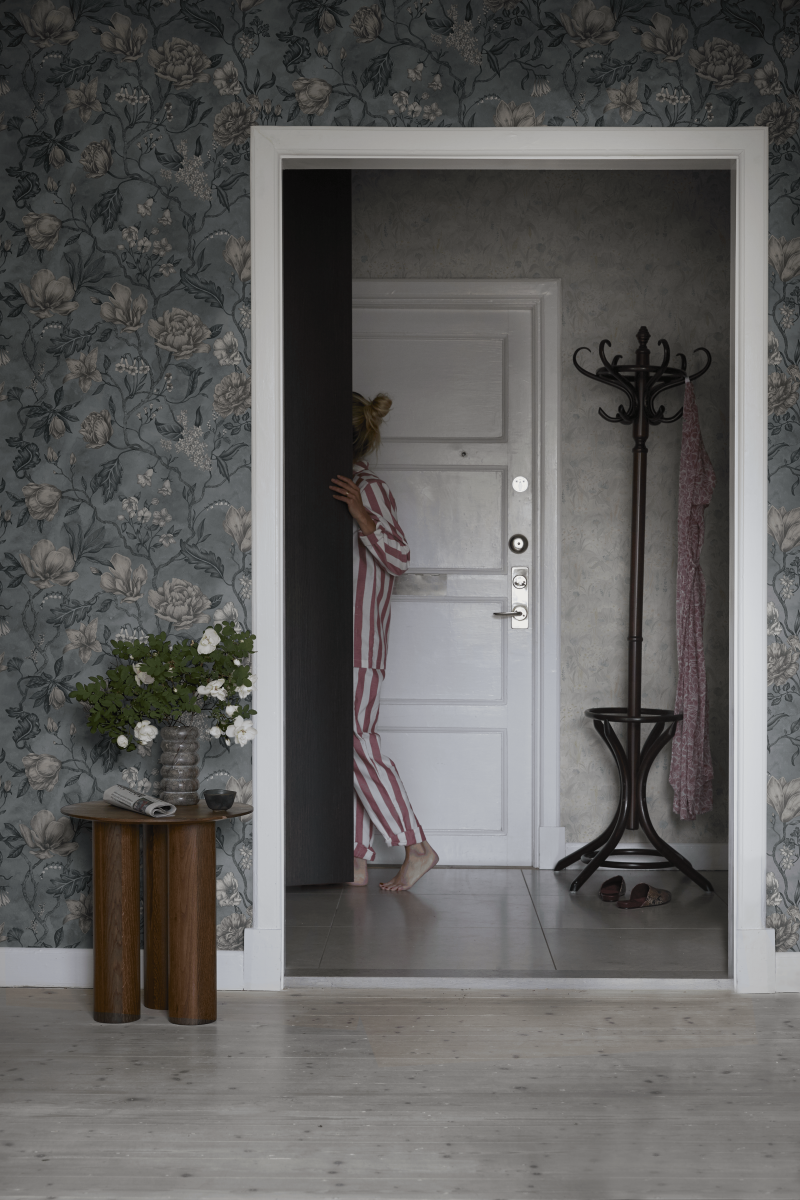 Left: Raphael Forest wallpaper interior. Right: Linda Misty Blue wallpaper interior. Images Credit, Sandberg
Left: Raphael Forest wallpaper interior. Right: Linda Misty Blue wallpaper interior. Images Credit, Sandberg
The thorough and painstaking process means that designers are often working on collections scheduled for release five years into the future. Sandberg releases two new collections a year, and always ensures that a new design both fills a gap in their portfolio, and still feels part of the family of designs: “it's important for us to launch collections where we see that there is a gap. We need to have a very complete range and make sure that we have collections that are in the right segments.” One such design is their "Chinoiserie Garden," developed especially for architects and interior designers, which draws on the use of Chinese motifs and techniques in 17th century Chinese wallpapers.
.jpg?s=1200&q=60)
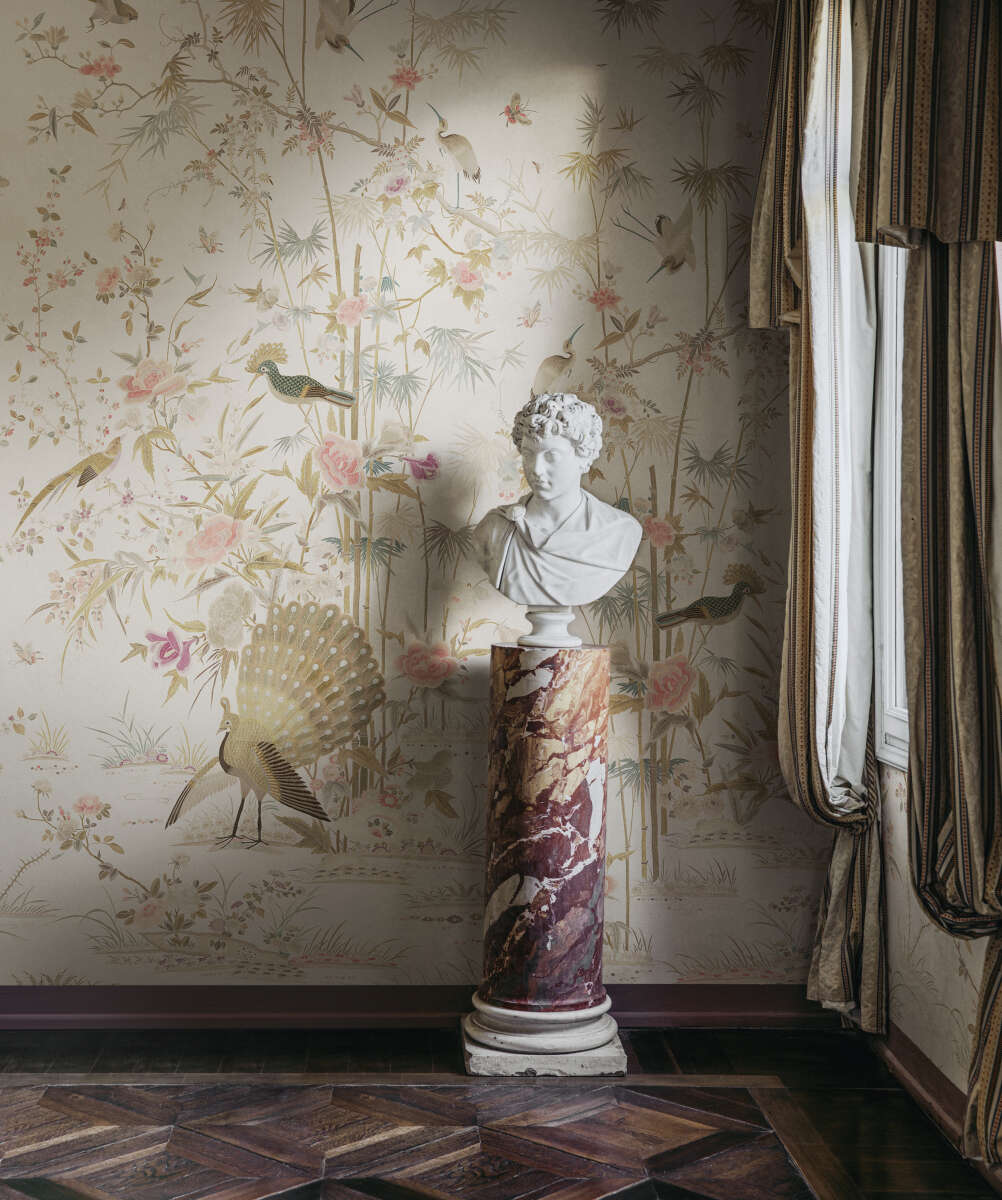 Chinoiserie Garden wallpaper in eggshell. Images Credit, Sandberg
Chinoiserie Garden wallpaper in eggshell. Images Credit, Sandberg
Scandinavian inspiration and global appeal
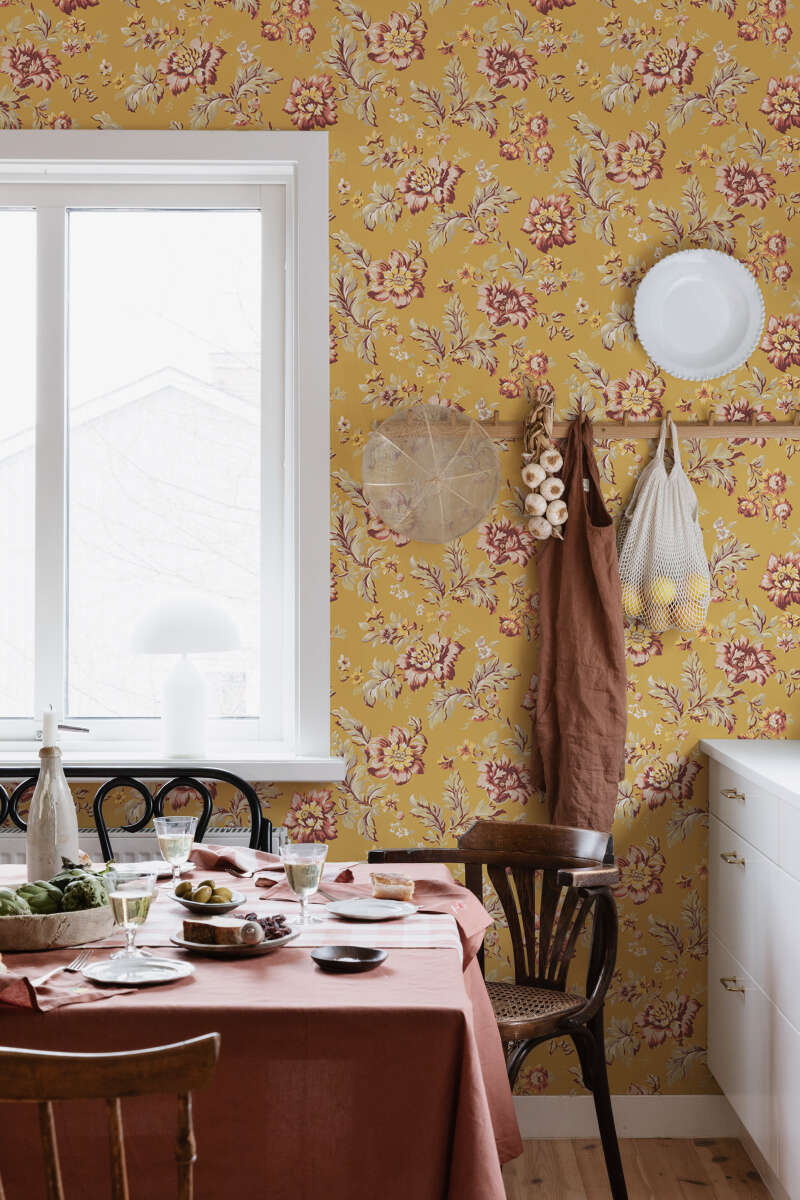
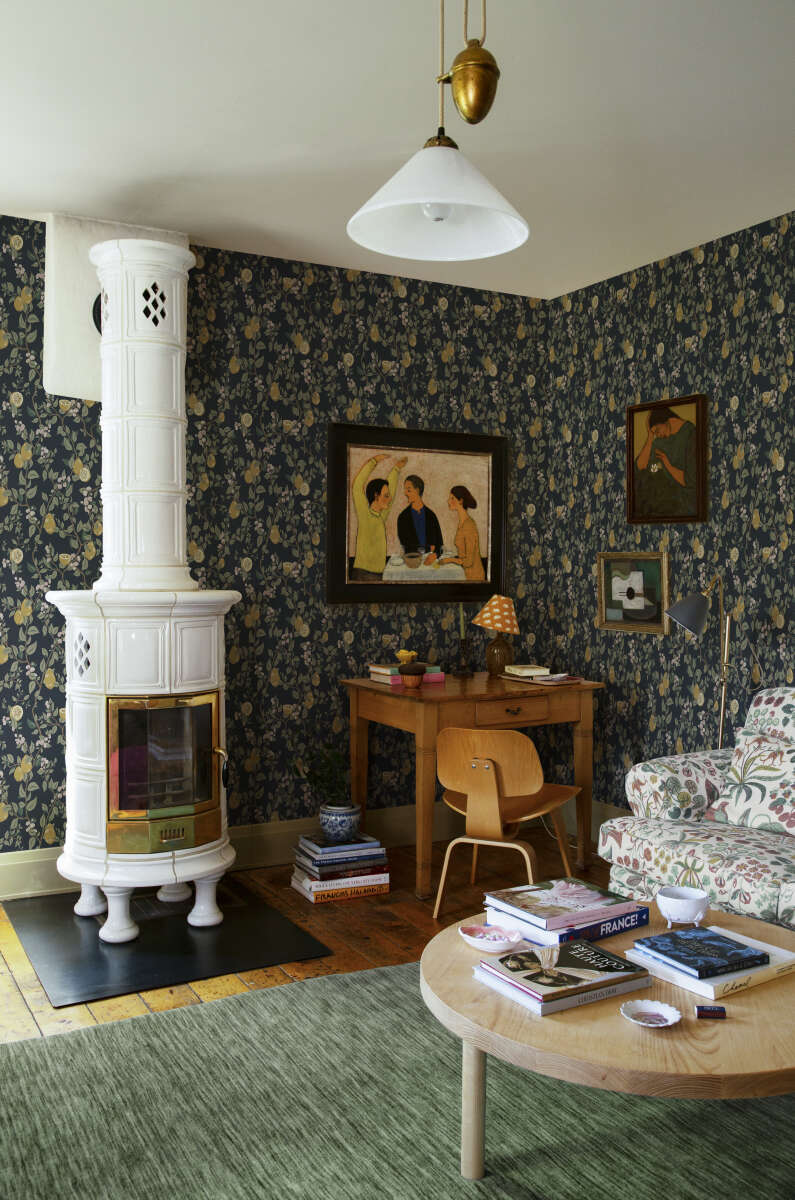 Left: Rosenholm yellow wallpaper interior. Right: Kvitten midnight blue wallpaper interior. Images Credit, Sandberg
Left: Rosenholm yellow wallpaper interior. Right: Kvitten midnight blue wallpaper interior. Images Credit, Sandberg
A burgeoning fascination with Scandinavian interiors, particularly embracing the concept of hygge – a Danish term conveying cosiness and comfortable conviviality that engenders a sense of contentment and well-being. This trend celebrates simplicity, minimalism, and a deep connection with nature, elements that are fundamental to Scandinavian lifestyle and design philosophy. The lush forests, tranquil lakes, and changing seasons of Sweden provide a rich tapestry of motifs and colour palettes. As Fanny explains, "A lot of the inspiration comes from the Swedish nature, landscape, the surroundings that we have in Sweden. But we also try to find inspiration from other parts of the world... It's very important for us to make sure that the design expression feels Scandinavian." This interpretation of international influences through a Scandinavian lens, has led to its success, particularly in the US, where there has been a significant surge in the appreciation of Scandinavian design. The authenticity of their work appears to resonate deeply with international audiences seeking the simplicity, warmth, and elegance inherent in Scandinavian aesthetics.
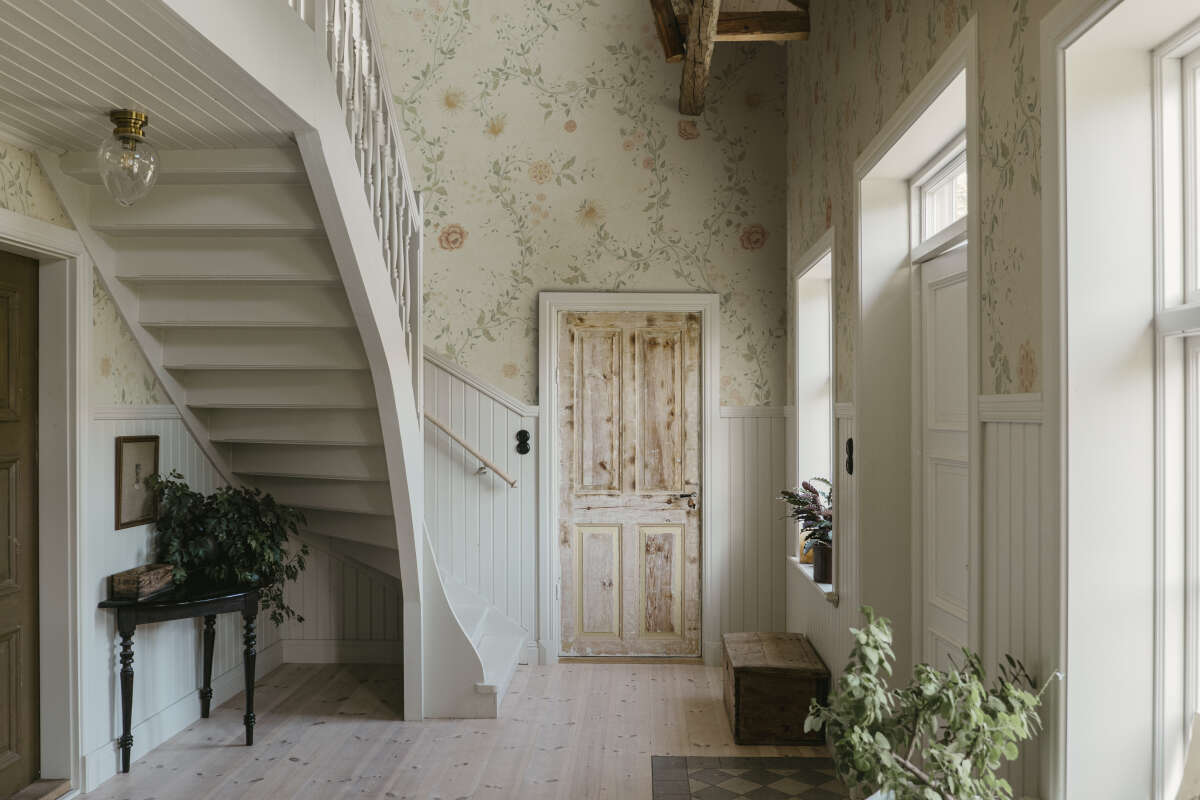 Inger Pastel wallpaper interior. Images Credit, Sandberg
Inger Pastel wallpaper interior. Images Credit, Sandberg
A new chapter on Architextures
Sandberg's hand-drawn wallpapers are now be available as digital resources on Architextures, allowing professionals to easily incorporate Sandberg's patterns directly into their designs and visualisations. This development enables architects and designers to experiment with combining the brand’s diverse wallpapers across the unified collection that Sandberg has worked so hard to achieve. As Fanny mentioned, the company's vision has been "to make Sandberg more international and more accessible in the world" – its arrival on Architextures feels like the next step on this journey.
Ellen Peirson is an architect and writer based in London.

